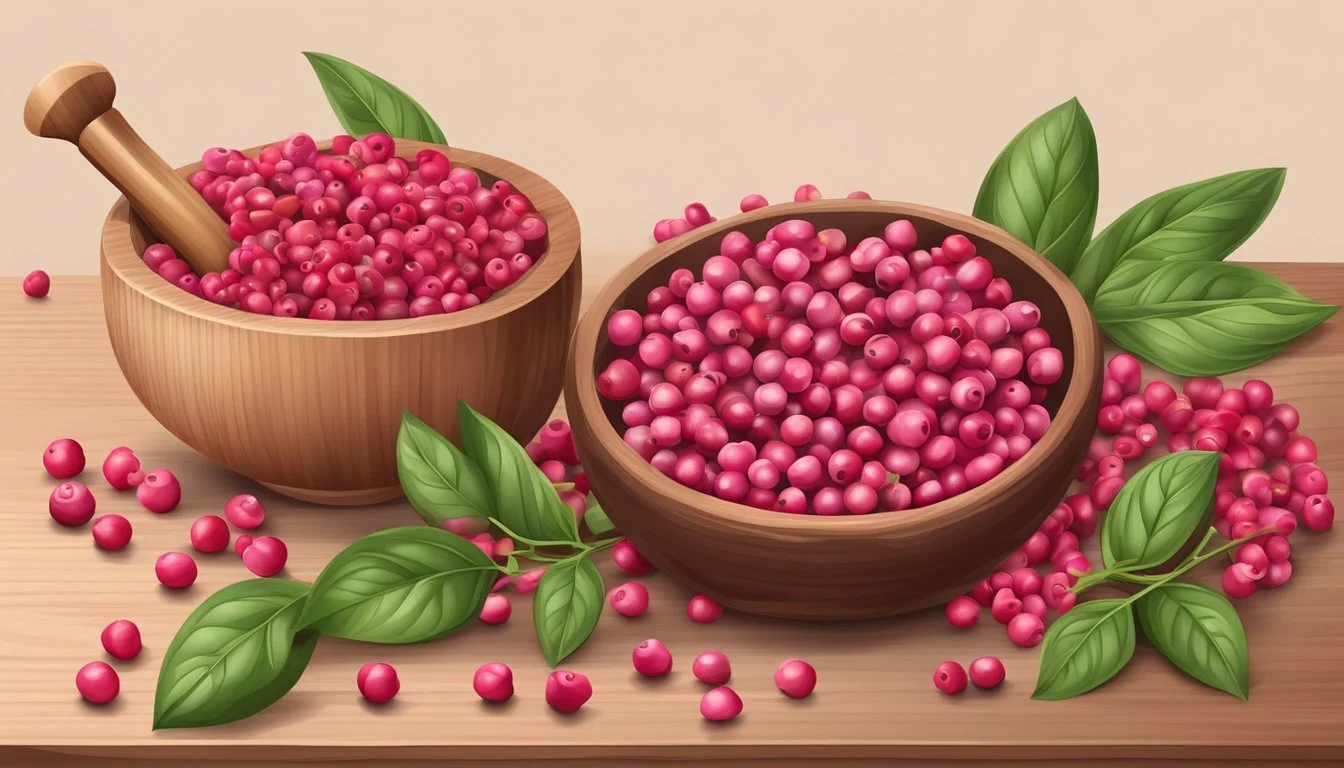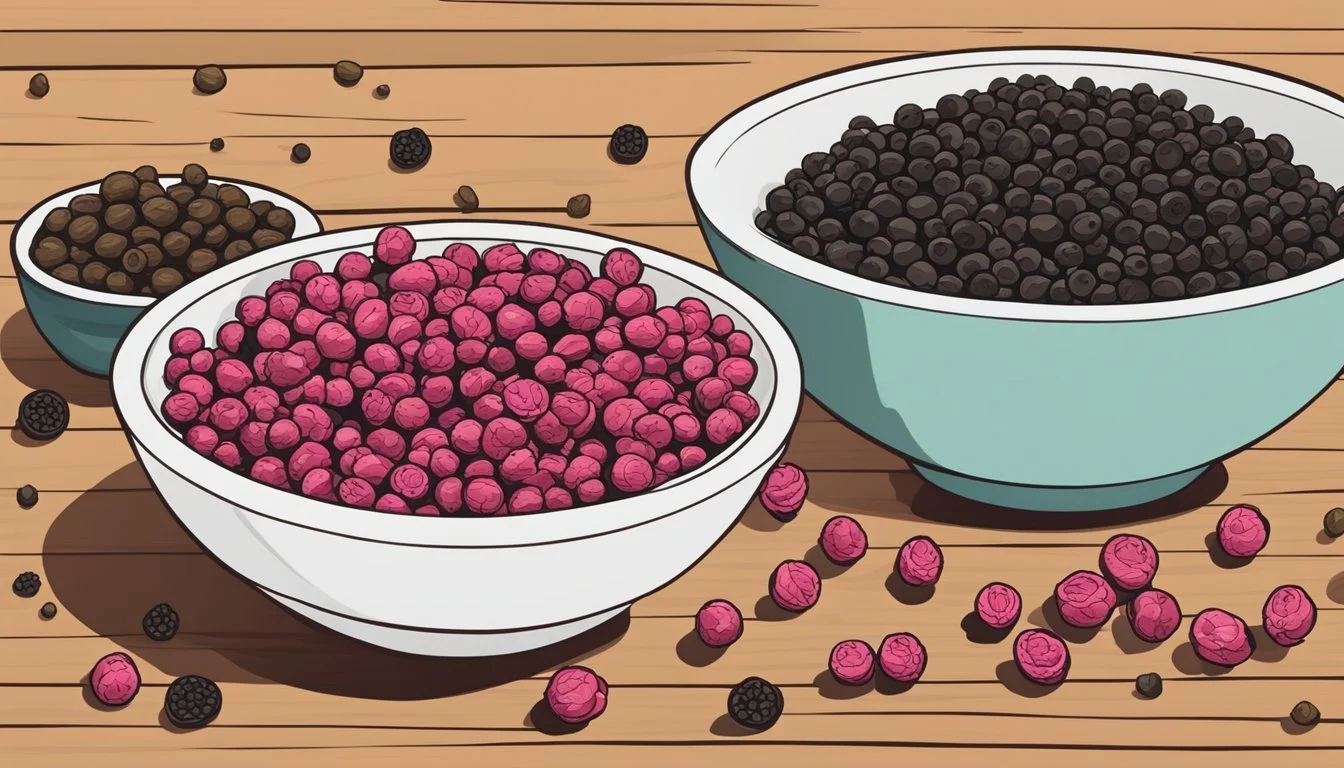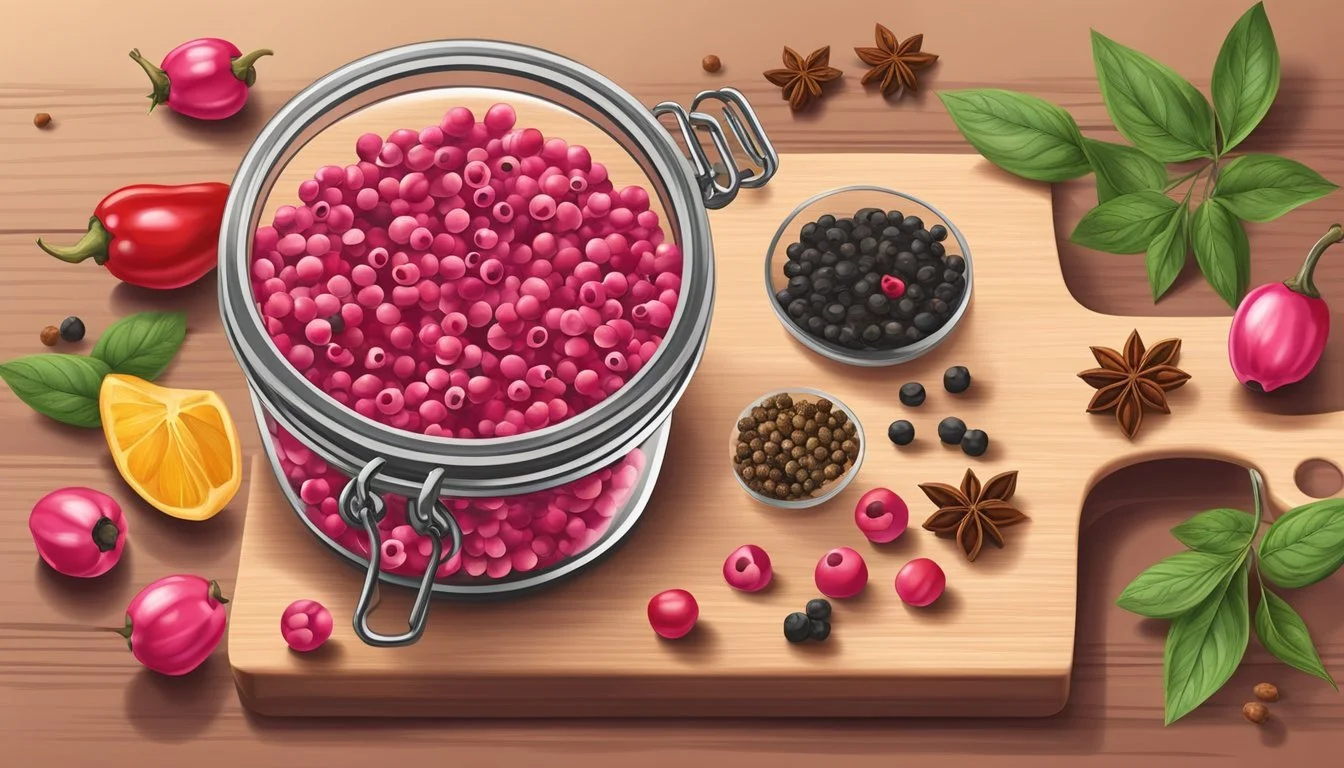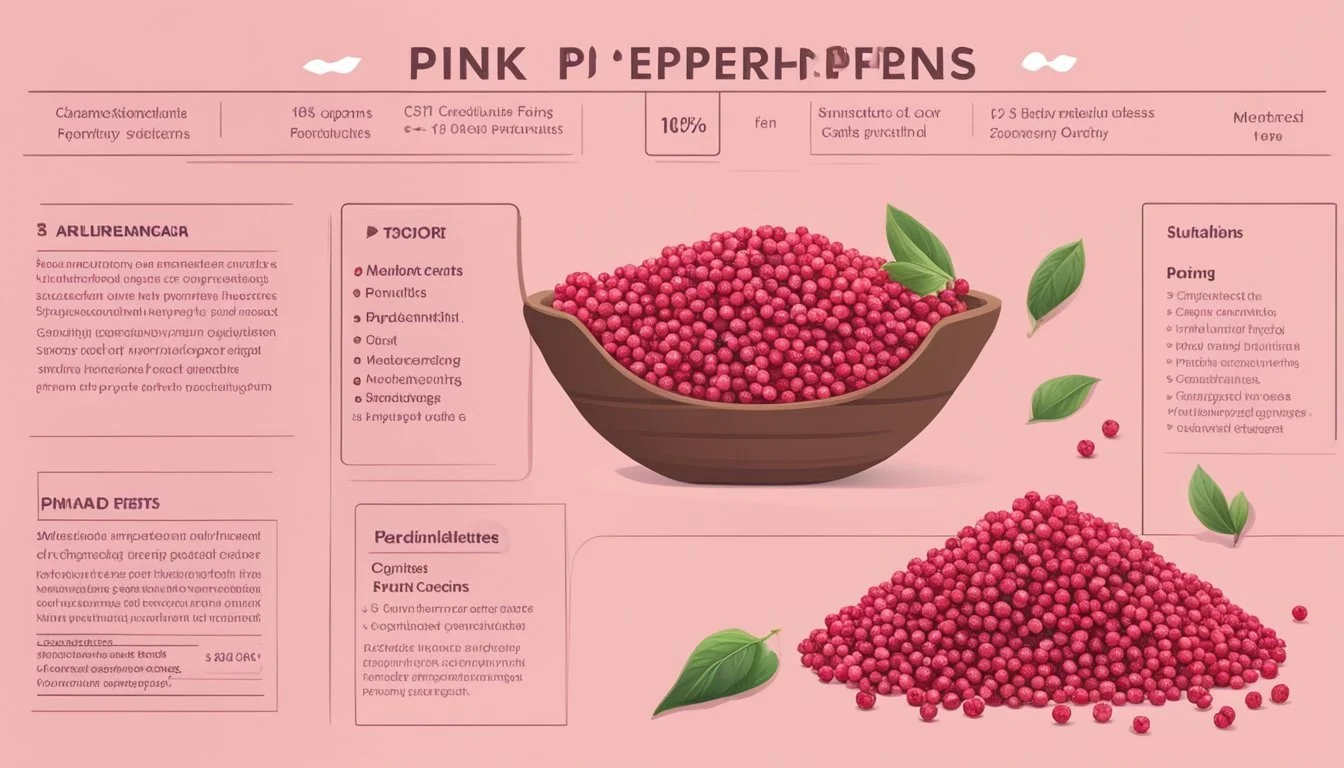Pink Peppercorns Substitutes
Best Alternatives for Your Recipes
Pink peppercorns, with their mild heat and fruity flavor, have become a favorite in kitchens around the world. Known for their versatile use in both sweet and savory dishes, these vibrant berries can sometimes be hard to find. When pink peppercorns are unavailable, several substitutes can provide a similar taste profile.
Common alternatives include green peppercorns, a mix of various peppercorns, or even freshly ground black pepper. Each substitute offers a unique twist to the intended flavor, making them suitable for various culinary applications.
Coriander seeds and capers are also excellent options, delivering a different but equally delightful culinary experience. With these substitutes, you can still spice up your recipes and maintain the desired flavor profile.
Understanding Pink Peppercorns
Pink peppercorns are not true peppercorns but have a unique flavor profile and origin. They offer a delicate, fruity, and floral taste that can enhance various dishes.
Origins and Characteristics
Pink peppercorns come from the berries of the Schinus molle (Peruvian pepper tree) and Schinus terebinthifolius (Brazilian pepper tree). Unlike black, white, or green peppercorns, which are from the Piper nigrum plant, pink peppercorns are not true peppercorns. The berries are typically soft and brittle, making them easier to crush.
These trees are native to South America. The Schinus molle bears small, round berries with a vibrant pink to red hue. The Schinus terebinthifolius produces slightly larger but similarly colored berries. Both types of pink peppercorns are dried and used as spice.
Culinary Profile
In cooking, pink peppercorns are valued for their delicate and unique combination of fruity, citrusy, and floral flavors with a subtle peppery kick. They offer a mild heat compared to traditional peppercorns. The aroma is also distinct, adding an appealing fragrance to dishes.
Pink peppercorns can be used whole, crushed, or ground. They pair well with a variety of ingredients, from seafood to salads and even desserts. Because of their mild nature, they complement rather than overpower other flavors. The bright color can also add visual appeal to culinary creations.
Culinary Applications
Pink peppercorns and their substitutes can be utilized in various ways to enhance the flavor and presentation of dishes. Their versatility allows them to be used in both savory and sweet culinary creations.
Utilizing Whole Peppercorns
Whole peppercorns can be used as a garnish to add a vibrant touch of color to any plate. When used whole, they provide a burst of flavor that is both aromatic and slightly sweet. For best results, it's recommended to crush them gently with a pepper mill before incorporating them into recipes.
Sprinkling whole peppercorns in salads or on top of poultry, seafood, or meat dishes can create an appealing visual and taste contrast. They can also be ground using a spice grinder to a finer consistency, suitable for seasoning dressings and sauces.
Cooking and Pairing
When cooking, pink peppercorns shine in a variety of dishes. They complement a wide range of proteins, including poultry, seafood, and meats. Their floral notes meld well with dressings and marinades, providing a unique twist.
Incorporate them into sauces for a dual effect: both as a flavor enhancer and as a textural element. They can be combined with other spices to create complex and aromatic spice blends. Pairing them with citrusy flavors can highlight their unique profile, making them an excellent choice for dishes that aim for a balanced, yet adventurous taste.
Dessert and Beverage Enhancements
In desserts, pink peppercorns offer an unexpected twist. Their slight sweetness and floral aroma make them a perfect match for chocolates, fruits, and creamy desserts. They can be used infused in solutions or ground and sprinkled for garnishing.
For beverages, pink peppercorns can elevate the complexity of cocktails like gin and tonics, adding a layer of spice and aroma. They can be used to create syrups or infused directly into the drink, lending a unique floral note that balances well with various spirits and mixers. This makes them a sought-after ingredient in both gourmet and everyday culinary applications.
Common Pink Peppercorn Substitutes
Pink peppercorns offer a distinctive fruity and mildly spicy flavor, but several other spices can serve as effective alternatives. Each substitute provides a unique taste and level of spiciness, allowing for versatile culinary adaptations.
White Pepper
White pepper, derived from the same Piper nigrum plant as black pepper, offers a milder flavor. It lacks the outer black layer, giving it a less pungent but still peppery taste.
This pepper works well in lighter-colored sauces and dishes due to its light appearance. Its subtle heat and earthy notes make it a suitable replacement. Ground white pepper integrates smoothly into liquids and sauces, making it ideal for creamy soups and white sauces where maintaining a pale color is important.
Green Peppercorns
Green peppercorns also come from the Piper nigrum plant and offer a fresher, more tangy flavor. They are harvested before fully maturing and typically preserved in brine, which enhances their moderate spiciness.
Their slightly fruity taste makes them a close match to pink peppercorns. They add a tender, peppery flavor useful in both savory and sweet dishes. Green peppercorns are excellent in sauces, salads, and even desserts, providing a versatile option.
Black Pepper
Black peppercorns are the most common of all pepper varieties, known for their sharp, robust flavor. They provide a bolder peppery taste compared to pink peppercorns.
These peppercorns are fully ripened berries that are dried until they become wrinkled and dark. They can be used whole or ground, making them adaptable for various dishes. Black pepper's intense heat can be controlled by using it sparingly, making it a powerful substitute that can match the spiciness of pink peppercorns when needed.
Additional Spice Alternatives
Other spices can mimic the fruity or spicy notes of pink peppercorns. Coriander seeds offer a citrusy and earthy flavor, making them a good alternative. They can be used whole or ground, depending on the recipe.
Sichuan pepper provides a citrusy and numbing sensation, offering a unique twist, especially in Asian-inspired dishes. It pairs well with other spices such as cinnamon or in blends like Chinese five-spice powder.
Papaya seeds can also be an innovative substitute, delivering a peppery kick similar to that of black pepper. They are less common but offer an interesting textural and flavor variation. For a bit of acidity and a different type of tanginess, capers can also be considered, though they diverge a bit more from the traditional peppercorn profile.
This variety of substitutes ensures that even without pink peppercorns, dishes can still achieve a dynamic and flavorful spiciness.
Purchasing and Storing
Pink peppercorns are a unique spice that can elevate many dishes. Knowing where to purchase them and how to store them properly ensures you maintain their distinct flavor and quality.
Where to Buy
Pink peppercorns can be found in various places. Gourmet food stores often carry them, sometimes in specialty spice sections.
For convenience, online retailers provide a wide range of options and brands. Purchasing whole peppercorns ensures the longest shelf life and maximum flavor.
Farmers' markets might also offer high-quality options. Look for vibrant, pinkish-red berries that indicate freshness. Quality can vary, so buying from reputable sources is advisable.
Preservation Tips
To keep pink peppercorns fresh, store them in an airtight container in a cool, dry place. Exposure to moisture or light can degrade their quality.
If buying whole peppercorns, use a spice grinder to crush them just before use for optimal flavor.
For extended storage, consider freezing whole peppercorns. This method can preserve their flavor for up to two years. Avoid grinding large quantities at once to maintain their aromatic properties. Proper storage techniques will keep your spice ready to enhance dishes for months.
Alternative Use Cases
Pink peppercorns, known for their unique vibrant hue and mild yet tangy flavor, are not limited to culinary delights. Beyond adding character to dishes, these peppercorns have other interesting applications.
Non-Culinary Applications
Pink peppercorns can be used in decorative crafts. Their striking color makes them an excellent addition to potpourri, wreaths, and centerpieces.
They can also be utilized in natural dyes. When combined with other natural elements, they produce soft pink shades ideal for fabrics and papers. Additionally, some people use them in homemade beauty products like scrubs and bath salts due to their color and mild fragrance.
Including pink peppercorns in these applications not only adds a touch of natural elegance but also imparts a subtle, unique fragrance to the creations.
Nutritional Information and Considerations
Pink peppercorns, used in various culinary dishes, offer intriguing nutritional benefits. They are rich in antioxidants, helping to fight oxidative stress. These tiny berries also contain essential oils that contribute to their flavor and health benefits.
Micronutrients:
Vitamin C: Enhances immune function.
Vitamin K: Supports bone health.
Calcium: Essential for maintaining strong bones and teeth.
Macronutrients:
Carbohydrates: Most of the content, primarily fibers.
Fats: Minimal, mostly healthy fats.
Proteins: Low but present in small amounts.
Potential Considerations:
Allergies: Some people might experience allergic reactions, similar to those caused by cashew nuts.
Caloric Content: Low in calories, making them a healthy addition to various recipes.
Digestive Impact: The fibers can aid in digestion, but overconsumption may cause digestive discomfort.
Pink peppercorns can be a flavorful and nutritious addition to various dishes. They not only enhance taste but also contribute to overall nutritional intake.
Other Points to Note:
Glycemic Index: Low, making them suitable for those monitoring blood sugar levels.
Antimicrobial Properties: Some studies suggest potential antimicrobial benefits, adding to their health profile.
Expert Tips and Insights
Food enthusiasts and professionals often seek comprehensive resources on peppercorn substitutes. This guide offers culinary tips from personal chefs and caterers, focusing on taste preferences and professional food advice.
Catering to Taste Preferences
Understanding the flavor profile of pink peppercorns helps in selecting a substitute. White peppercorns provide a milder, earthy taste with a sharp heat, making them suitable for dishes that require a subtle but pungent undertone. They are often used in light-colored sauces to avoid discoloration.
For those desiring a fresher and tangier profile, green peppercorns are an excellent choice. Harvested before maturity, they offer a moderately spicy and bright flavor.
Culinary experts also recommend Sichuan pepper for its unique citrusy and slightly numbing taste, perfect for adding complexity to Asian dishes. Each of these substitutes can cater to different taste preferences, allowing chefs to maintain balance and harmony in their recipes.
Professional Food Advice
In professional kitchens, maintaining the intended taste and visual appeal of a dish is crucial. A personal chef may choose green peppercorns for their fresh flavor, especially in seafood and vegetable dishes. They are available in brine or freeze-dried, offering versatility in various recipes.
A caterer might opt for a blend of spices, such as the Chinese five-spice powder, blending star anise, cloves, cinnamon, Sichuan peppercorns, and fennel seeds. This mix adds depth and complexity to meats and stews.
Professional food writers and restaurant reviewers suggest ground pepper as a convenient alternative. Finely ground black or white pepper can substitute pink peppercorns effectively, preserving the dish's intended heat and pungency.
These expert insights provide valuable guidance for choosing the right substitute, ensuring that culinary creations remain flavorful and visually appealing.





